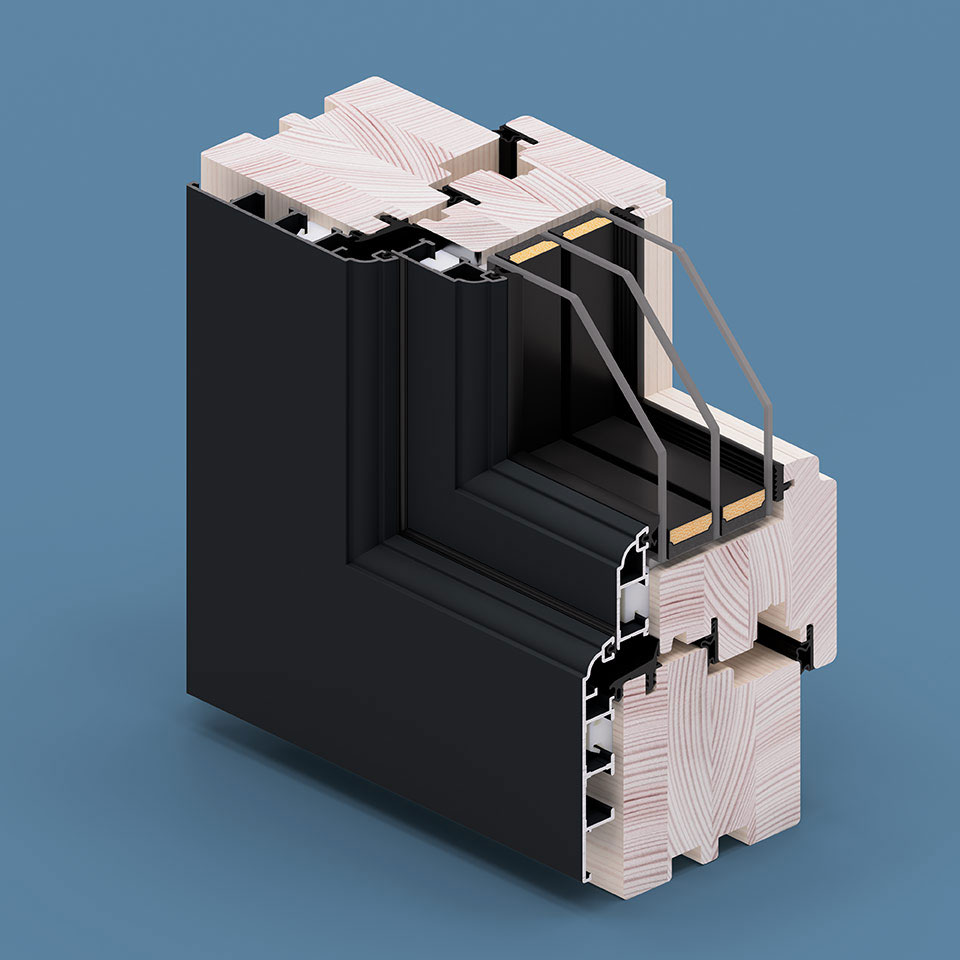Aluron cladding for wooden structures
Aluron aluminium cladding is available in several variants. The following tables show the options available in the MS Windows and Doors offer. The profiles on offer differ primarily in their appearance.
- Cladding for wooden windows and balcony doors:
| Types of cladding (profile with frame gasket) | Types of cladding (profile without frame gasket) |
| Softline | – |
| Classic | Classic SF |
| Retro | – |
| Quadrat | Quadrat SF |
| Quadrat FB | Quadrat FB SF |
| Linear | – |
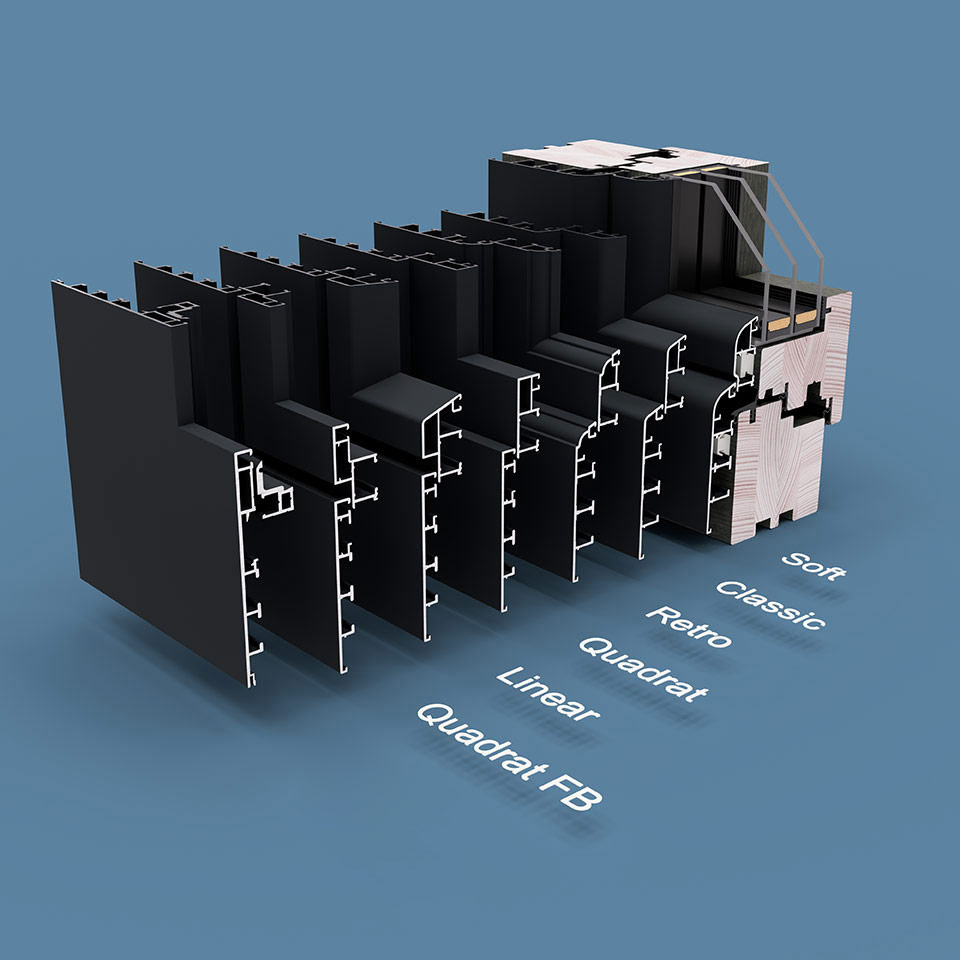
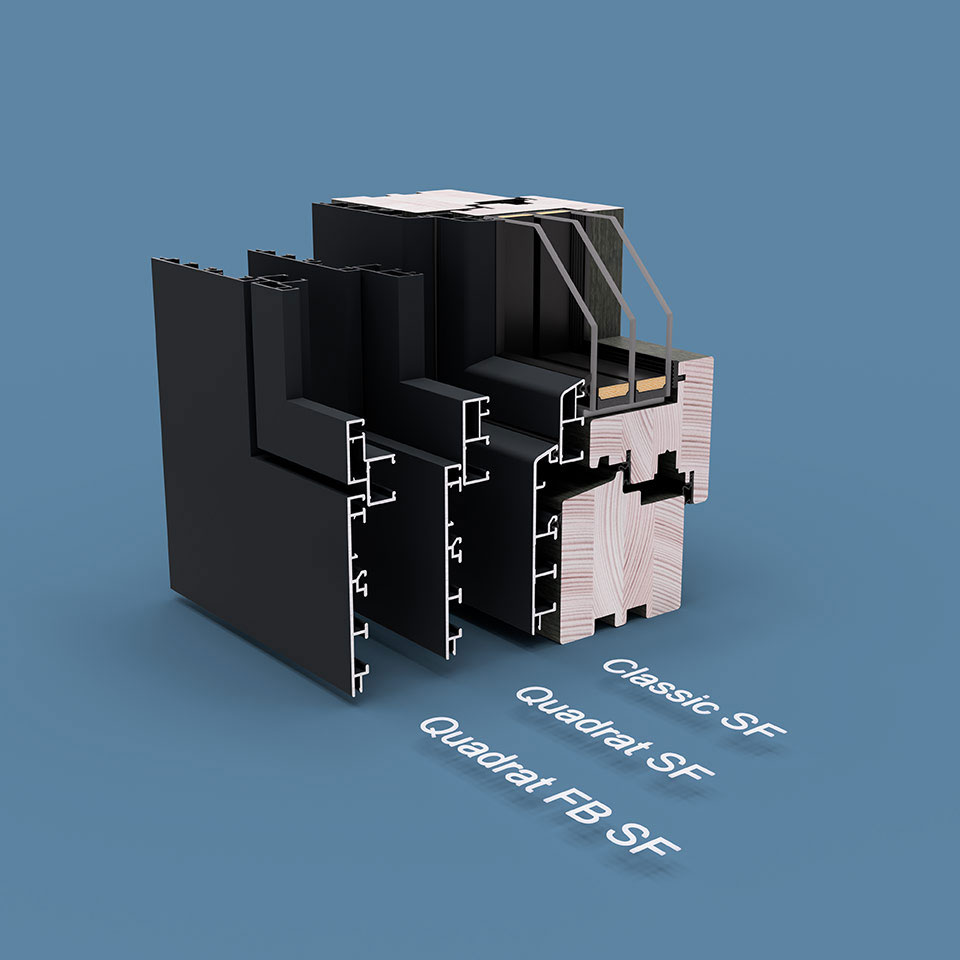
- Cladding for wooden lift and slide doors:
| Types of cladding for Patio HST – lift and slide doors made of wood |
| Classic |
| Quadrat (Quadrat FB, Linear) |
Gemini Classic cladding
Gemini Classic are the classic, most popular aluminium cladding systems. They are characterised by a gentle bevel as well as a matching curve. They are available with a frame gasket (Classic) as well as without it (Classic SF). In the version without a gasket, the bevel on the wooden lower frame part is responsible for draining water into the drainage holes.
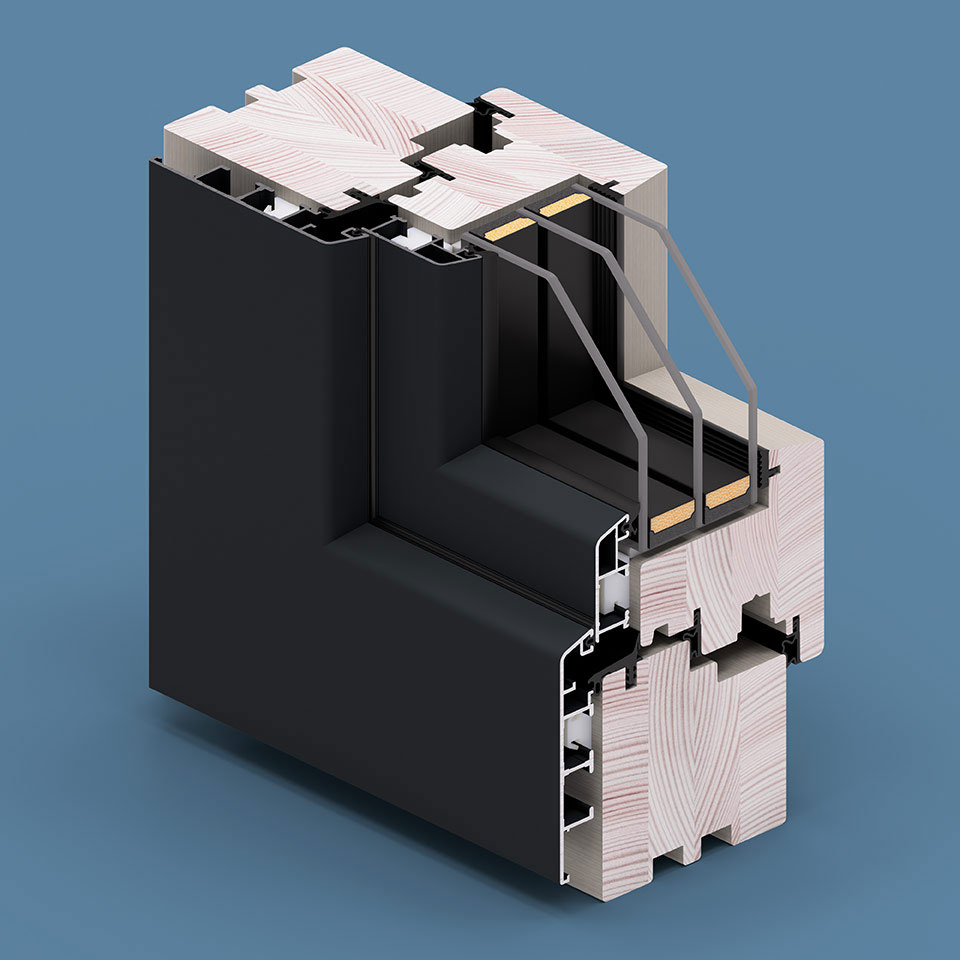
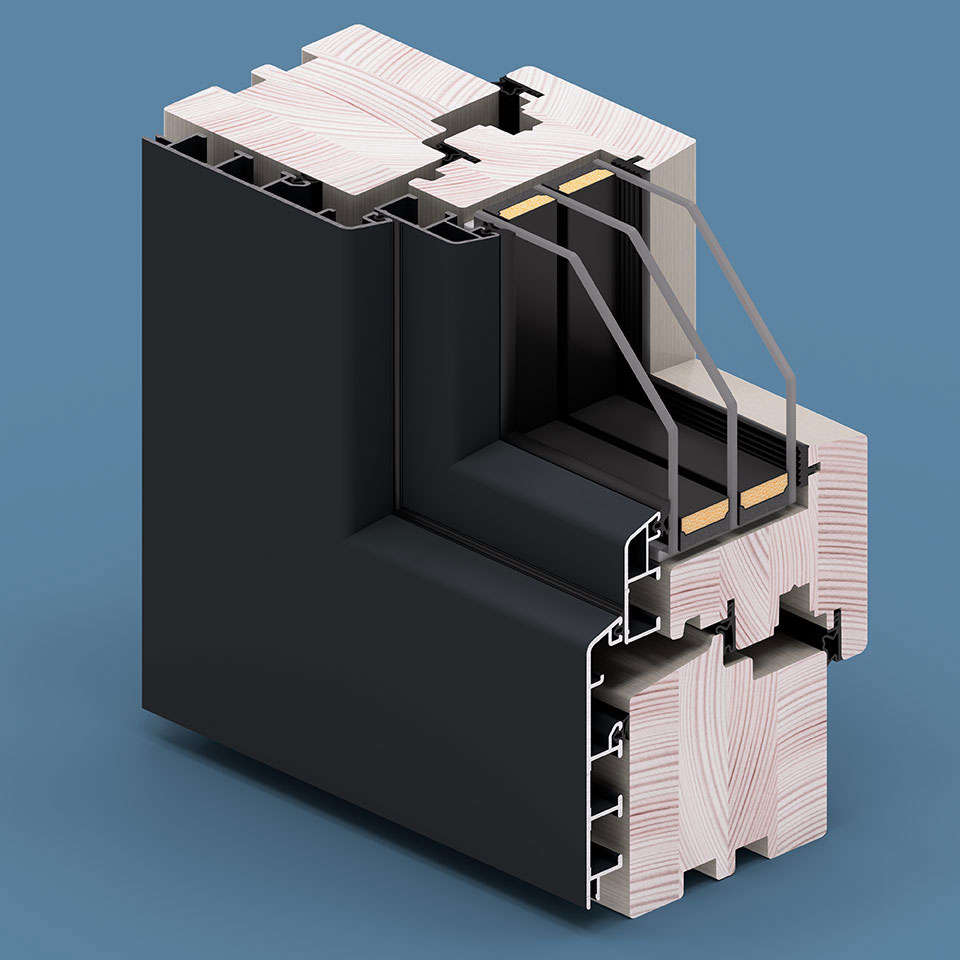
Quadrat cladding
This system is distinguished by its modern appearance. This is because the facings do not have a slanted shape, but an angular one. The surface of the sash cladding is set back in relation to the surface of the frame cladding. This solution will undoubtedly prove useful in the case of joinery used in modern buildings. It is also available in the Quadrat SF version – without frame gasket.
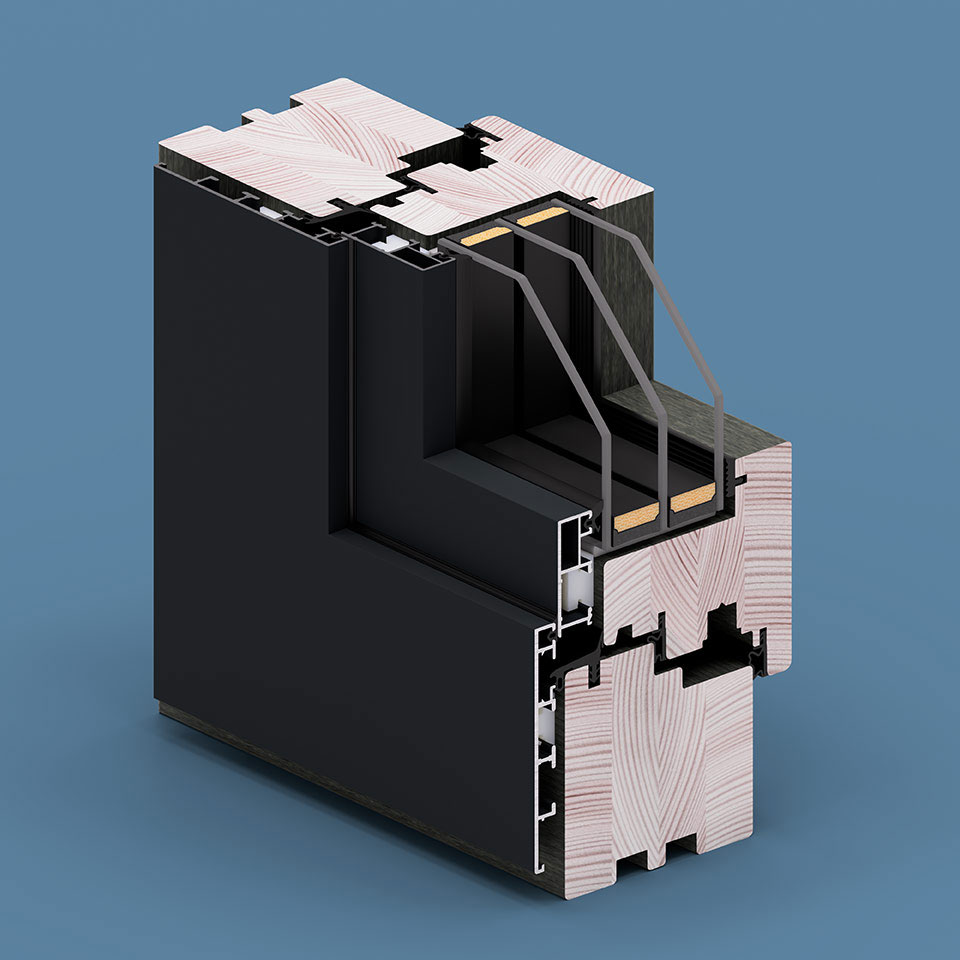
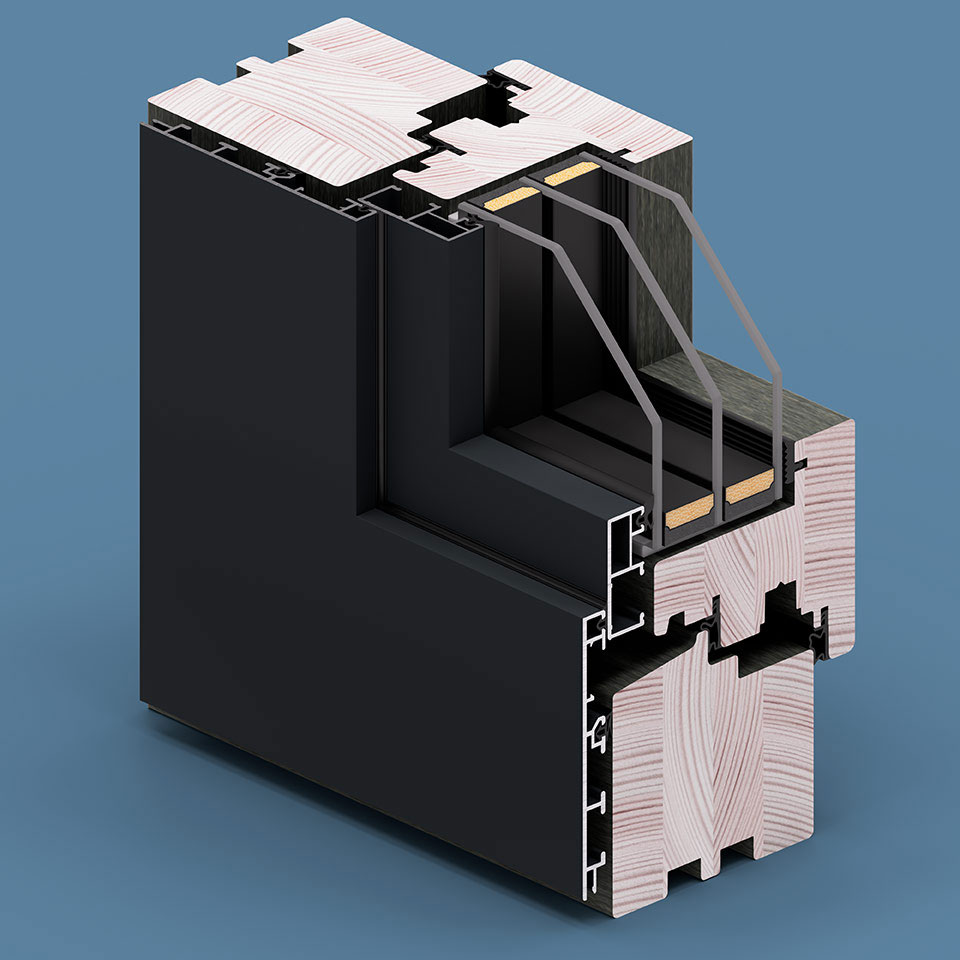
Quadrat FB cladding
A system similar in appearance to the variant described above. The difference between these versions is that with the FB version, the sash cladding surface and the frame cladding surface form a plane. This not only has a positive effect on the appearance of the structure, but also makes it possible to install a glazed unit with a larger width. This type of cladding is also available in the version of the frame without gasket (Quadrat FB SF).
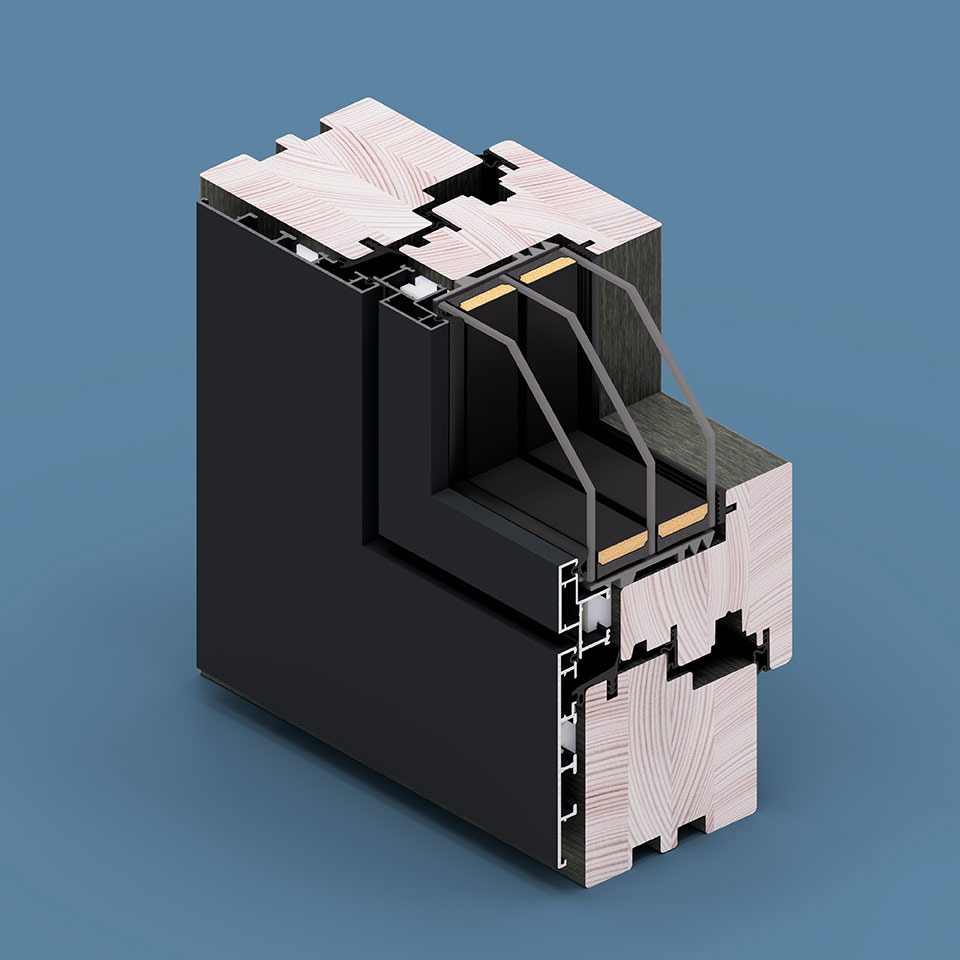
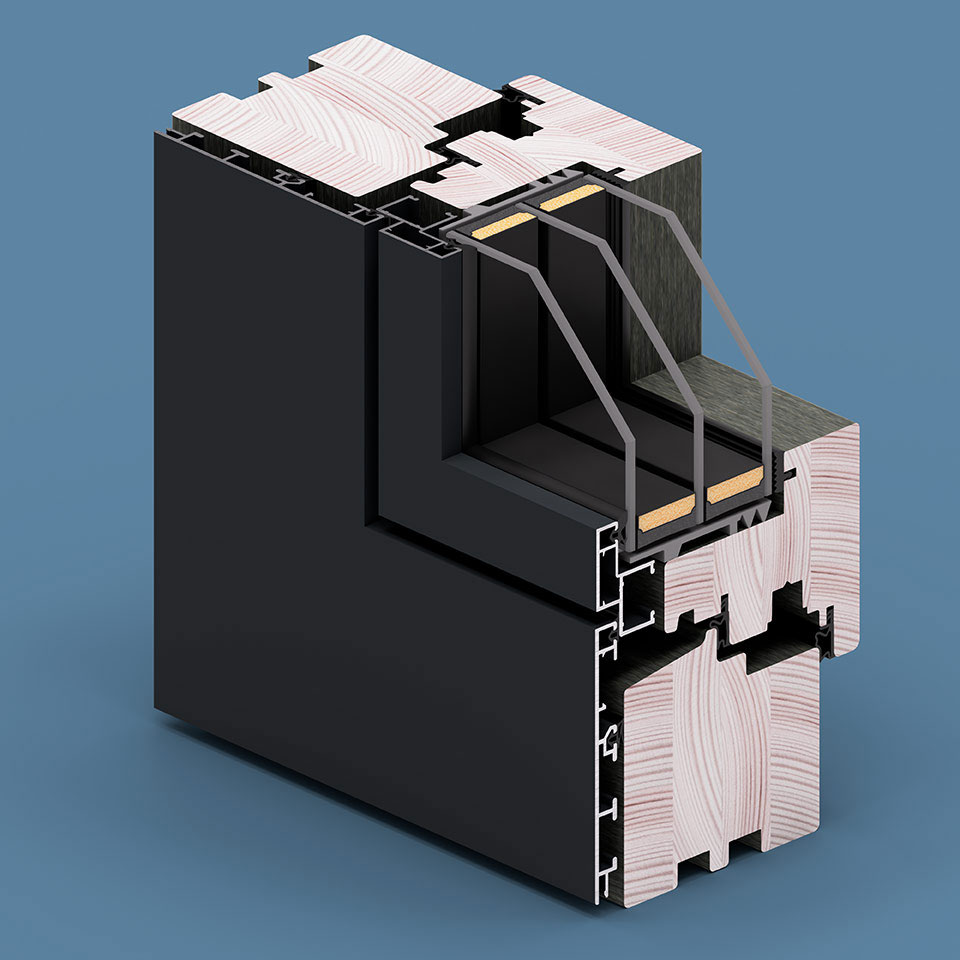
Linear cladding
In the case of Linear cladding, as in the previous variant, the sash surface is flush with the frame surface. The difference between these systems is the different angle between the cladding and the outer plane of the profiles. In the Linear version, this is not a right angle – there is a clearly defined bevel.
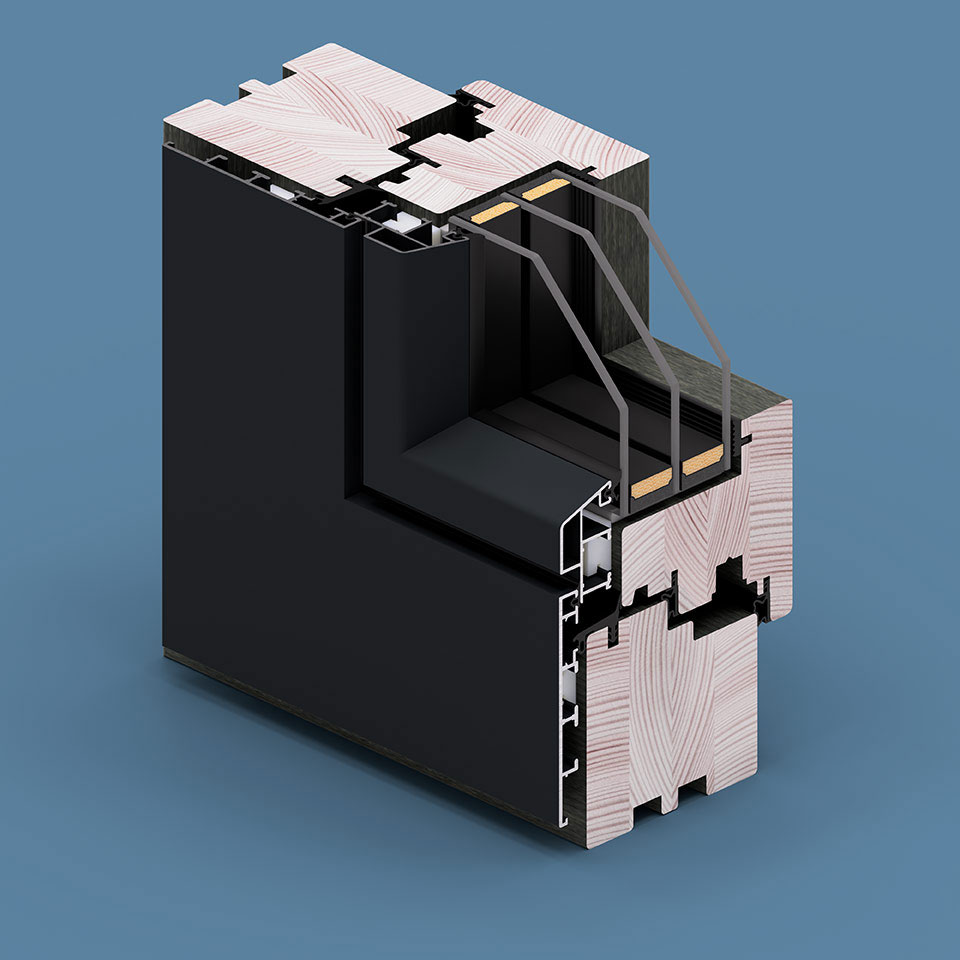
Softline cladding
The Softline variant is distinguished by the rounded shape of the aluminium profile. Compared to the Classic system, there is also a larger bevel. This solution is sure to attract the attention of those who prefer soft lines.
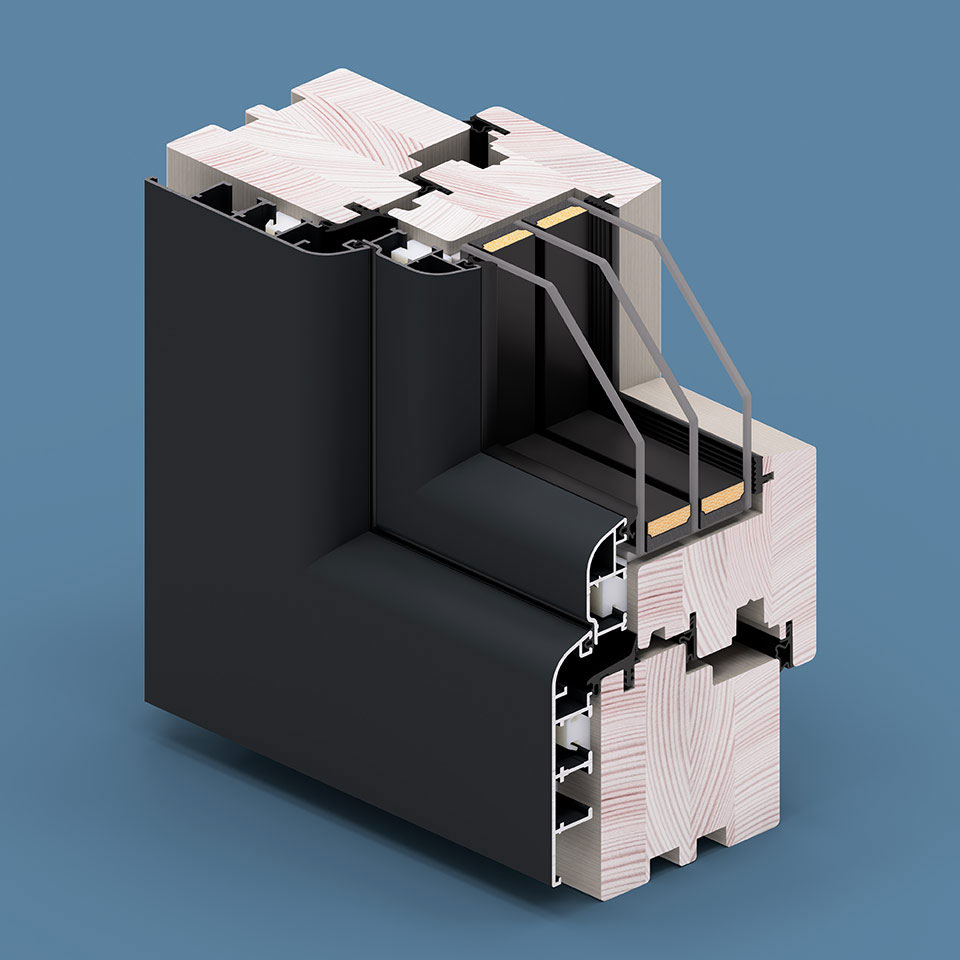
Retro cladding
The Retro version adapts exceptionally well to historic buildings. It also works well in objects styled to look like they were built years ago. The unusual shape of the cladding emphasizes the unusual nature of wooden windows.
